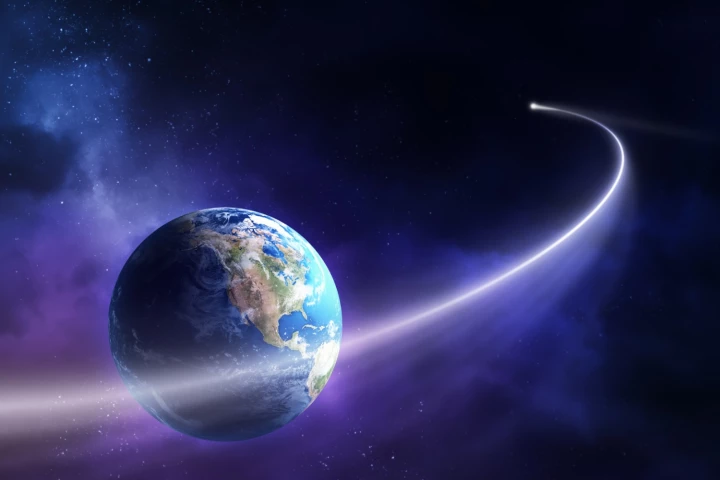Near Earth object
-
As the dinosaurs could attest, it’s worth keeping an eye on space rocks buzzing around Earth. Many observatories are doing just that, and astronomers have announced that we’ve just ticked over the milestone of 30,000 near-Earth asteroids discovered.
-
Astronomers have identified an asteroid that made the closest pass to Earth ever recorded, and it was only spotted after it had passed. The object skimmed Earth’s atmosphere over the weekend, close enough to have its orbit changed by the gravity.
-
Of all the things you don’t want to lose, an asteroid with a chance of striking Earth is pretty high up the list. A potentially dangerous space rock called 2006 QV89 has been missing in action for 13 years, but now astronomers have finally found it, and ruled out an impact within the next century.
-
An object originating from outside the Solar System has been detected passing through the Sun's real estate. Temporarily designated as A/2017 U1, the extrasolar asteroid or comet was recorded after approaching from interstellar space and heading out again on a parabolic trajectory.
-
Last week, Earth was buzzed by asteroid 3122 Florence, the largest space rock NASA has seen come this close since it began tracking near-Earth objects (NEOs). NASA took the opportunity to study Florence close up, confirming its monster size and revealing that it has two tiny moons.
-
Asteroids whizz past Earth on a regular basis, usually only a few meters wide. But next month we’re due for a close encounter with a monster space rock measuring 4.4 km (2.7 mi) across, making it the largest near-Earth object to come this close since NASA began tracking them almost 20 years ago.
-
Asteroid 2012 TC4 hasn’t been seen since its last brush with our planet 5 years ago, but astronomers knew it would return in October 2017. Right on cue, the building-sized rock has now emerged from the darkness of space, and its trajectory has been calculated.
-
NASA has established the Planetary Defense Coordination Office to detect and track potentially hazardous space rocks and coordinate response plans with the US government if an impact threat arises. Now, NASA will test its detection equipment on a known asteroid that’s due to buzz Earth in October.
-
In 2010, equipped with the biggest astronomical camera in the world, the Pan-STARRS1 telescope began scanning the sky in different wavelengths of light. Now all 2 petabytes of data gathered will become available to the public.
-
This year the tally of known near-Earth asteroids and comets passed 15,000 and more are being discovered, like asteroid 2016 VA, which buzzed our planet Wednesday just a day after it was first spotted.
-
NASA's NEOWISE telescope has had a pretty interesting life. First operational between 2009 and 2011 as the WISE telescope, the probe was brought out of hibernation in 2013, and tasked with an all new mission – spotting, tracking and characterizing asteroids and comets that approach closet to Earth.
-
The B612 Foundation has released a video depicting the distribution of 26 asteroid impacts known to have struck the Earth since the year 2000. Many of the impacts detected exploded with a force greater than the city-leveling bomb dropped on Hiroshima, which had an explosive yield of 15 kilotons.
Load More











